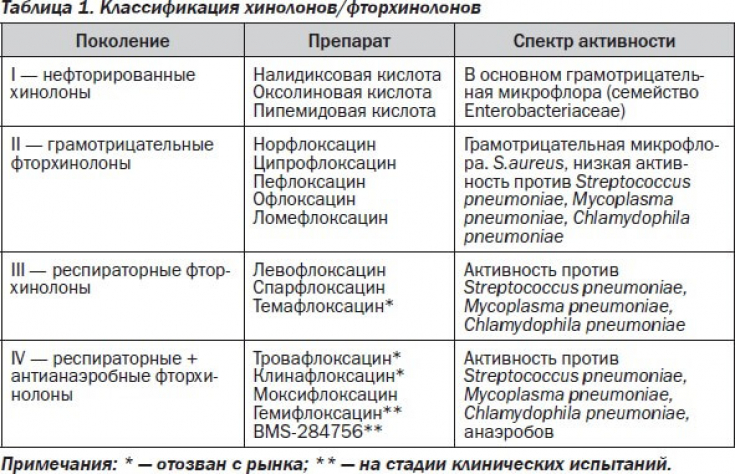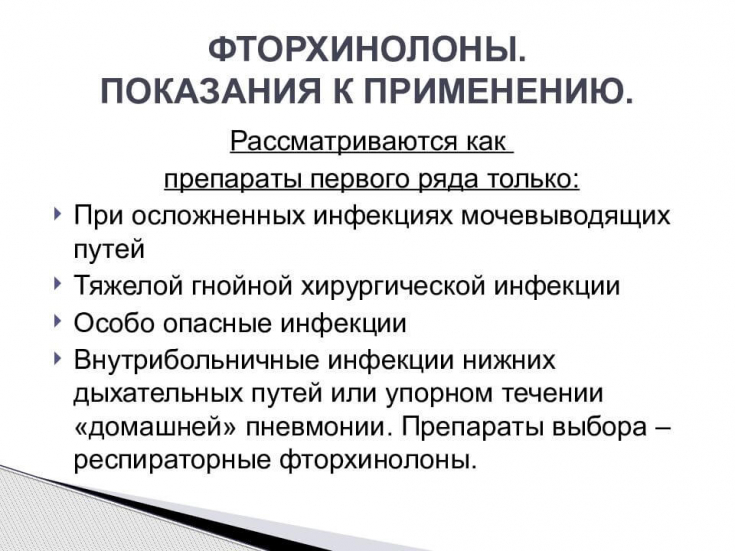In the spectrum of undesirable side effects when using antimicrobials, one of the important problems is their cardiotoxic effect.
In a number of publications the prolongation of the interval Q-T during ECG is considered as a group property of fluoroquinolones (FC) .
Earlier, due to the cardiotoxic effect, the highly effective drug grepafloxacin was withdrawn from the pharmaceutical market by the manufacturer.
For more information about the features of the use of fluoroquinolones and their prescription schemes, read the article on estet-portal.com.
- Toxic effects of fluoroquinolones
- Complication studies with fluoroquinolones
- Fluoroquinolone Cardiotoxicity Study Resultsin
Toxic effects of fluoroquinolones
Three reports of cardiac arrhythmias of torsade de pointes, without death.
Follow us on Instagram!
In animal experiments, it has been found that when administered rapidly, fluoroquinolones caused a prolongation of the QT interval.
The most pronounced effect on the conduction system of the heart is exerted by sparfloxacin, and clinical manifestations of cardiotoxicity were also recorded when using:
- levofloxacin;
- ofloxacin;
- moxifloxacin;
- gatifloxacin;
- Ciprofloxacin.
The mechanism of action on the heart is that fluoroquinolones are blockers of the HERG gene, which encodes fast potassium channels.
The blockade leads to retention of potassium ions in the cell and lengthening of the repolarization period.
Updated recommendations for the diagnosis and treatment of herpes simplex disease
Clinically, this is manifested by a prolongation of the QT interval and an increased likelihood of torsades de pointes.
Recent research results confirm this.
Studies on complications with fluoroquinolones
Scientists from the University of British Columbia (Vancouver, British Columbia, Canada) conducted a study in which they confirmed that the use of oral fluoroquinolones is associated with the pathology of the cardiovascular system, namely with increased risk of aortic or mitral regurgitation.

The effect of oral fluoroquinolones on the increased risk of aortic and mitral regurgitation was studied using disproportion analysis and a case-control study.
Data from the US Food and Drug Administration (FDA) Adverse Events Reporting System were used for evaluation and a random sample of patients from the US PharMetrics Plus database was used for the corresponding study.
How to protect yourself during the cold season: unique data on influenza vaccination
The current impact of fluoroquinolones was regarded as the appointment of FQ on the day of a certain (index) date or 30 days before the registration of complications.
Recent exposure to fluoroquinolones was considered use between days 31 and 60, and past exposure to − within 61 days / 365 days.

Patients treated with amoxicillin and azithromycin were compared with others who took oral fluoroquinolones to assess the odds ratios (OR).
Results of a study on the development of cardiotoxicity with the use of fluoroquinolones
The study revealed 12505 cases of side effects and complications in the use of fluoroquinolones, 125020 patients were assigned to the control group.
Adjusted odds ratios for patients who used fluoroquinolones with current exposure compared with patients who took amoxicillin and azithromycin, which were 2.40 (95% CI 1.82-3.16) and 1.75 (95% CI 1.34-2.29) respectively.
What are the clinical forms of adenovirus conjunctivitis
These results indicate that a high risk of aortic and mitral regurgitation is observed with current exposure to fluoroquinolones, decreasing with recent exposure.
No risk has been observed when using FC in case of past exposure.
In order to confirm or refute this information, further observations and studies are needed, since fluoroquinolones in the clinic are reserve drugs for the development of severe infectious diseases.







Add a comment